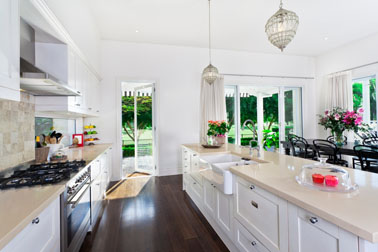 By TreeLiving If you are focused on saving the environment, an eco house could be the ideal way to do it. If you want to find out how to make your next DIY project more eco-friendly there are some things you need to keep in mind if you decide to go through the green route. Planning the Eco House First, you need to decide how far you want to go. Do you want your home to be 100 percent green or maybe half of it? You may want a house that is entirely natural and even primitive, or you may want a traditional home with green features. From saving money to protecting the environment and keeping additional maintenance work at bay, how you address your eco house plan will help you to get a grasp on how far you want your green home to go. Building Materials There are different kinds of natural building materials available, some of them have been tried and work properly, and the rest are experimental. Rammed or poured earth, straw bale construction, and even the earth itself (as in digging a home into a hillside) are all natural materials for building. For roofing, you can plant a green roof, which is a roof that can be partially or completely covered with vegetation and is usually planted over a waterproofing membrane. Green roofs can reduce the overall heating as it adds mass and thermal resistance value. You can also use green versions of traditional roofing materials, such as slate or recycled metal. Location Location is vital in any real estate venture; but with an eco house, there are some special considerations. For example, you have to make sure that no important natural habitat would be destroyed by your building efforts. Also, if you want your home to be solar-powered, you have to be sure that your home's location receives the appropriate amount of sunlight, wind or water for wind and water power appliances. Landscaping Choose native plants for your landscaping as much as possible. Native plants will not “escape” into surrounding eco-systems and become invasive, because they are adapted to the area they belong, they are hearty and low-maintenance. Utilities Living off the grid is a goal for the eco home. If that is not possible, then energy- and water-saving appliances should be installed. Consider solar panels for a significant percentage of your home's power. Solar panels not only help to meet the energy requirements in your house but also produce extra energy that can benefit more households. Look into a tankless water heater and a low-flow or dual-flush toilet and low-flow faucets to save water. It is possible to install toilets that use no water at all – composting and incinerating models are available.
By TreeLiving If you are focused on saving the environment, an eco house could be the ideal way to do it. If you want to find out how to make your next DIY project more eco-friendly there are some things you need to keep in mind if you decide to go through the green route. Planning the Eco House First, you need to decide how far you want to go. Do you want your home to be 100 percent green or maybe half of it? You may want a house that is entirely natural and even primitive, or you may want a traditional home with green features. From saving money to protecting the environment and keeping additional maintenance work at bay, how you address your eco house plan will help you to get a grasp on how far you want your green home to go. Building Materials There are different kinds of natural building materials available, some of them have been tried and work properly, and the rest are experimental. Rammed or poured earth, straw bale construction, and even the earth itself (as in digging a home into a hillside) are all natural materials for building. For roofing, you can plant a green roof, which is a roof that can be partially or completely covered with vegetation and is usually planted over a waterproofing membrane. Green roofs can reduce the overall heating as it adds mass and thermal resistance value. You can also use green versions of traditional roofing materials, such as slate or recycled metal. Location Location is vital in any real estate venture; but with an eco house, there are some special considerations. For example, you have to make sure that no important natural habitat would be destroyed by your building efforts. Also, if you want your home to be solar-powered, you have to be sure that your home's location receives the appropriate amount of sunlight, wind or water for wind and water power appliances. Landscaping Choose native plants for your landscaping as much as possible. Native plants will not “escape” into surrounding eco-systems and become invasive, because they are adapted to the area they belong, they are hearty and low-maintenance. Utilities Living off the grid is a goal for the eco home. If that is not possible, then energy- and water-saving appliances should be installed. Consider solar panels for a significant percentage of your home's power. Solar panels not only help to meet the energy requirements in your house but also produce extra energy that can benefit more households. Look into a tankless water heater and a low-flow or dual-flush toilet and low-flow faucets to save water. It is possible to install toilets that use no water at all – composting and incinerating models are available.
Build Your Own Eco Dream Home

